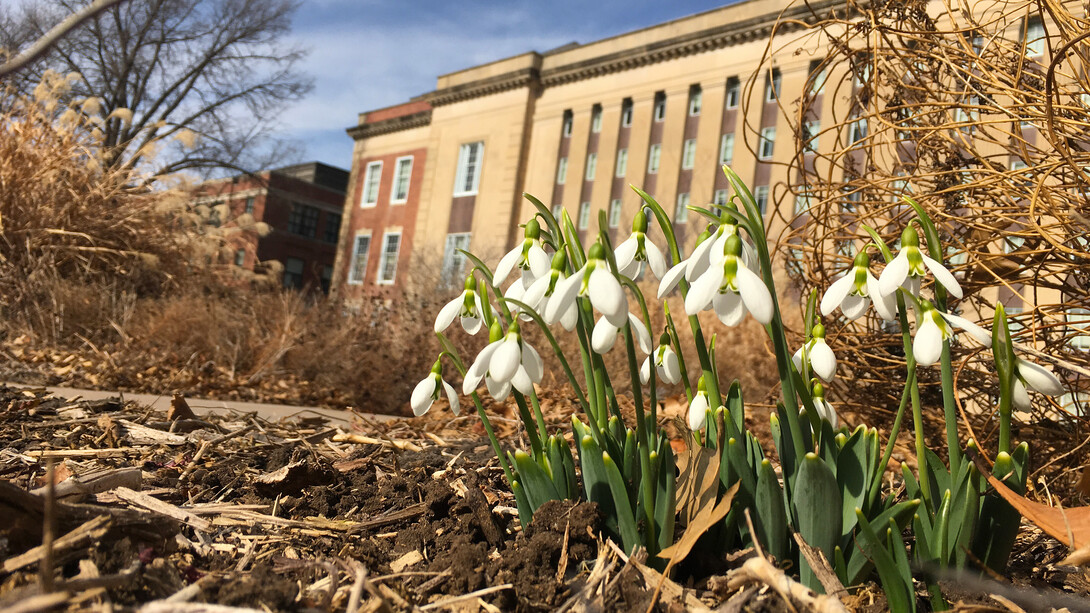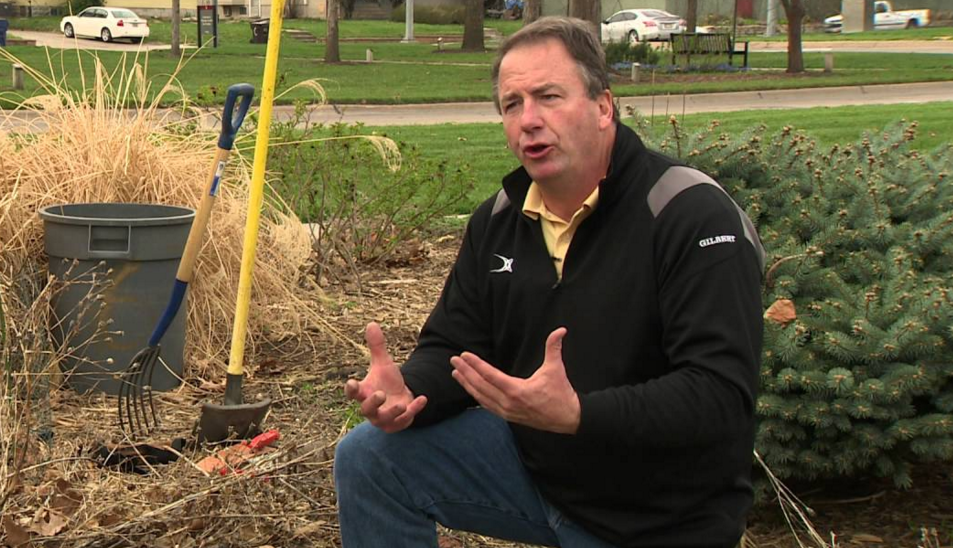
Robins are heralding the morning light. Early blooms are reaching toward the sun. And the extended forecast calls for daytime high temperatures rising into the low 50s to upper 60s.
It’s mid-February in Nebraska, Lincoln is on course for its lowest seasonal snow total ever and winter is over, right?
Not so fast — March is coming.
“It may feel like spring now, but there’s still a long way to go,” said Ken Dewey, professor of climatology at the University of Nebraska–Lincoln. “I’m always reluctant to draw any conclusions about the end of winter until March has passed.”
Based on 117 years of Lincoln weather data, March measured as the snowiest span a record 27 times. Reflecting Nebraska’s vibrant weather extremes, March 2016 was snowless.

“Last year, it didn’t snow again after the first week in February,” Dewey said. “If that happens again this year, this winter will have a record low amount of snowfall and the least number of days with snow on the ground of an inch or more.”
Since October, Lincoln has recorded just 5.1 inches of snowfall and only five days with snow on the ground measuring an inch-plus. The record low for seasonal snowfall in Lincoln is 7.2 inches and was set in 1967-68, with 9 inches second in 1965-66.
In 1964-65, snowfall totaled 5.8 inches in early February. On Feb. 11, 19 inches of snow fell in Lincoln.
“If you look at snowfall this season, it has been snowier just to the north of Lincoln,” Dewey said. “Most of the storms just missed us in a pattern that has been behaving like we are in Kansas or Oklahoma looking north at snow.
“But, that pattern could change — just like it did in 1965.”
>>For local weather updates from Ken Dewey, click here.
Despite the lack of localized snowfall, statewide drought conditions have retreated since January. According to the U.S. Drought Monitor, 65 percent of Nebraska was in moderate drought to abnormally dry conditions at the start of 2017. In the most recent report on Feb. 7, that total fell to 48 percent.
“There has been a snow drought in some areas of Nebraska, but January precipitation was 125 to 150 percent of normal totals,” said Martha Shulski, Nebraska’s state climatologist and director of the state climate office. “Last month was the 13th wettest January on record (statewide) and that helped reduce drought conditions statewide.
“In terms of surface moisture, Nebraska is in good shape at this time.”
Above-normal winter temperatures have resulted in warmer-than-average soil. Shulski said recent temperature readings of the top four inches of soil have averaged near 32 degrees.
Continued above-normal temperatures may spur early plant growth and negatively impact moisture levels, said Tyler Williams, an assistant Nebraska Extension educator and climatologist.
Williams said the spring scenario could mirror 2012 when temperatures warmed into the 80s in March and plants broke dormancy early. The extended growing season drained soil moisture and allowed weeds extra time to become established, two factors that made it more difficult for crops to develop.
“Soil moisture is not an immediate concern,” Williams said. “Though, if this warm weather continues into March, then it is going to be something we need to be concerned about.”
Sudden cold snaps and late-season snowfall may also damage early emerged crops (particularly winter wheat), trees, decorative shrubs, flowers and lawns, said Jeff Culbertson, assistant director of landscape services.
“Sustained low temperatures and heavy snow can cause some severe damage if plants and tree blooms are far enough along,” Culbertson said. “We haven’t seen much of that on campus yet. But, with the warm temperatures forecast for this week, I don’t think it would be surprising to see certain plants pushing through.”

If the warm temperatures continue, Culbertson said homeowners should monitor soil moisture conditions — particularly on items planted in the last two years — and water as needed.
“Root systems in one- or two-year-old plants are smaller and you should probably keep an eye on them,” Culbertson said. “Also monitor soil moisture on south facing plants, items near houses and anything with a grade to it.”
For information on season plant care and gardening, click here.
And, as for those chirping robins heralding spring, Mother Nature may be playing a trick on them as well.
“Some robins overwinter in the city, but many move to cover and food sources in rural areas,” said Paul Johnsgard, an ornithologist and emeritus professor of biological sciences. “It’s a little early for them to return, but — like many of us — warm February temperatures may be fooling them into thinking spring has arrived.”







